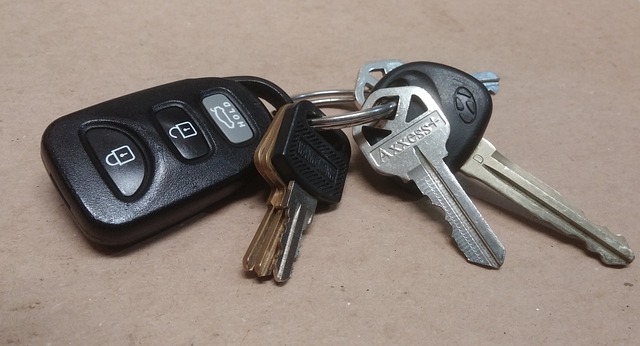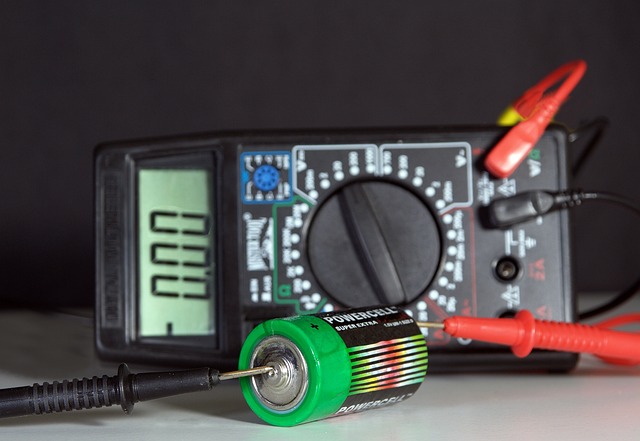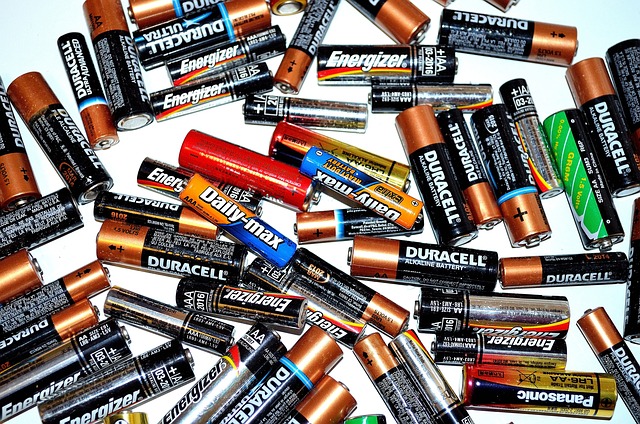Button batteries, commonly found in devices like remote controls, watches, and hearing aids, are compact high-energy cells that pose a significant safety risk if swallowed or improperly placed within the body. These batteries can generate hydroxide ions upon contact with bodily fluids, causing severe tissue damage within two hours, potentially leading to gastrointestinal perforation, bleeding, and life-threatening complications without immediate medical intervention. To prevent accidents, it is essential to practice safe handling, disposal, and storage of button batteries, utilizing child-resistant packaging and proper waste management. Raising awareness about the dangers of these batteries can lead to quicker response times, reducing the likelihood of serious injuries or fatal outcomes. For those who suspect a battery has been ingested, it is crucial to remain composed, avoid self-remedies, and seek immediate medical attention while documenting details for healthcare professionals. Preventive measures include secure storage, regular device inspections, responsible disposal, and educating family members on the risks. Child safety locks on devices and informative postings of emergency contacts are additional steps to ensure a safer home environment regarding button batteries.
Button batteries, small but potent, are ubiquitous in everyday devices. Their misuse or accidental ingestion can lead to severe health complications, a condition known as battery poisoning. This article delves into the early symptoms, preventive measures, and emergency protocols for such incidents. Understanding the dangers associated with button batteries, their common uses, and the chemical reactions that cause harm is crucial for prompt action and diagnosis by medical professionals. We will explore risk factors, educational initiatives, design innovations, and disposal practices to ensure safety and advocate for stricter regulations. This comprehensive guide aims to raise awareness and equip readers with the knowledge to prevent and address button battery poisoning effectively.
- Understanding Button Battery Dangers
- The Anatomy of a Button Battery and Its Common Uses
- Identifying the Early Warning Signs of Button Battery Ingestion
- Immediate Steps to Take Upon Suspecting Button Battery Ingestion
- Risk Factors: Who is Most Likely to be Affected by Button Battery Poisoning?
- The Chemical Reaction Behind the Harm Caused by Button Batteries
- Preventive Measures to Keep Your Home Safe from Button Battery Hazards
Understanding Button Battery Dangers

Button batteries, small disc-shaped cells, are commonly found in everyday household items such as remote controls, musical greeting cards, and watches. These batteries offer convenience but come with inherent risks. Their high energy density and ability to produce a significant electrical current make them dangerous if ingested. When a button battery is accidentally swallowed or inserted into body tissues, the chemical reactions it triggers can cause severe tissue damage within two hours due to the generation of hydroxide ions, which lead to caustic injury. This damage can be irrereversible, leading to serious complications including gastrointestinal perforation, hemorrhage, and even death if not promptly addressed through emergency medical intervention. It is crucial for parents, caregivers, and anyone who handles devices containing button batteries to be aware of the dangers they pose and to take immediate action should an exposure occur. Precautionary measures such as securely disposing of used batteries and child-resistant packaging can mitigate the risks associated with these seemingly benign power sources. Awareness and prompt response are key in preventing the severe consequences that can arise from button battery ingestion or insertion into bodily tissues.
The Anatomy of a Button Battery and Its Common Uses

Button batteries, often referred to as coin cells, are small, round cells that come in various sizes typically denoted by nominal voltages such as 1.5 volts. These batteries are enclosed within a hermetically sealed casing, usually made of aluminum, copper, zinc, or lithium, and are commonly used in everyday devices due to their compact size and high energy-to-weight ratio. The anatomy of a button battery consists of a positive electrode, a negative electrode, an electrolyte, and a separator. The positive terminal is typically made of lithium or aluminum, while the negative can be composed of zinc, copper, or silver oxide. The electrolyte, which varies depending on the type of battery, is usually a liquid in alkaline batteries or a paste in silver-oxide batteries, and it facilitates the movement of ions between the electrodes during discharge.
Button batteries are ubiquitous in various applications, from hearing aids and watches to remote controls and children’s toys. Their small size makes them ideal for devices where space is at a premium. Additionally, they are found in low-power memory backups, calculators, and electronic greeting cards. The commonality of these batteries in household items underscores the importance of proper handling and disposal to prevent accidental ingestion, which can lead to serious health issues, including battery poisoning. Understanding the composition and function of button batteries is crucial for recognizing potential risks associated with their misuse or malfunction.
Identifying the Early Warning Signs of Button Battery Ingestion

Button batteries, commonly found in household items such as remote controls, watches, and hearing aids, pose a significant risk if ingested. Immediate medical attention is critical upon suspicion of button battery ingestion due to the rapid potential for serious harm. Recognizing the early warning signs is crucial for timely intervention. Initial symptoms may include gastrointestinal distress such as vomiting or abdominal pain, which can appear within hours of ingestion. These symptoms suggest that the battery has begun its movement through the digestive tract. Another critical indicator is a metallic taste in the mouth, which may signal that the battery has reached the esophagus. This condition requires immediate medical evaluation, as the battery can cause chemical burns within two hours after ingestion. The presence of a button battery in the digestive system necessitates prompt endoscopic removal to prevent severe complications like perforation or obstruction. Vigilance and quick recognition of these symptoms can significantly enhance the chances of a positive outcome for those who have accidentally ingested a button battery. It is imperative to seek professional medical assistance at the earliest sign of these warning signs, as delayed response can lead to irreversible damage or even be fatal.
Immediate Steps to Take Upon Suspecting Button Battery Ingestion

If a button battery has been ingested, immediate action is crucial to prevent serious health complications. The first step is to remain calm and assess the situation carefully. Parents or caregivers should not attempt to induce vomiting or insert objects into the mouth of the individual, as these actions can lead to further harm. Instead, seek medical attention promptly by contacting emergency services or a healthcare provider specializing in poison control. Time is of the essence, and professional guidance is essential for proper diagnosis and treatment. In the meantime, document any observations, such as the battery type (button battery), if possible, and have this information ready for medical personnel. This will facilitate a faster and more accurate response to the ingestion incident. It is imperative to keep the suspected battery out of reach of children or pets to prevent additional ingestions and to ensure the safety of your household while awaiting professional care.
Risk Factors: Who is Most Likely to be Affected by Button Battery Poisoning?

Exposure to button batteries poses a significant health risk, particularly among young children and the elderly. These small, coin-sized batteries, commonly found in household items such as remote controls, musical greeting cards, and watches, can cause severe internal injuries if ingested. Children under five years old are most at risk due to their tendency to put objects into their mouths, while the elderly may accidentally swallow buttons from hearing aids or other devices. It’s crucial for caregivers and parents to be vigilant about the proper disposal and storage of these batteries to prevent accidental ingestion. Additionally, products containing button batteries should be designed with safety features that minimize the risk of removal by young children. Understanding who is most likely to be affected by button battery poisoning is essential for implementing preventative measures and raising awareness to safeguard against the serious consequences associated with this hazard.
The Chemical Reaction Behind the Harm Caused by Button Batteries

Button batteries, often found in household items such as remote controls, watches, and hearing aids, can pose a significant health risk if ingested. These batteries contain alkaline substances, typically lithium or zinc, which are corrosive. When a button battery is swallowed, it can initiate a harmful chemical reaction within the body’s soft tissues. The alkaline compounds react with bodily fluids, leading to rapid tissue damage, often within two hours post-ingestion. This reaction can cause severe chemical burns in the esophagus or stomach, which can be life-threatening if not promptly addressed through medical intervention. The corrosive nature of these substances means that the rate of tissue destruction is accelerated, underscoring the urgency for immediate medical attention upon any suspicion of battery ingestion. Understanding the rapid and aggressive nature of this chemical reaction highlights the importance of child-resistant packaging and vigilance in safeguarding young children from accessing these batteries.
Preventive Measures to Keep Your Home Safe from Button Battery Hazards

To safeguard your home from the potential hazards associated with button batteries, it is imperative to adopt a proactive approach in their management and storage. Firstly, ensure that all devices containing button batteries are well-maintained. Regularly inspect these devices for any signs of wear or damage that might compromise the integrity of the battery compartment. Keep spare button batteries secure and out of reach of children and pets, preferably in a locked cabinet. It’s also advisable to dispose of used button batteries promptly and responsibly, adhering to local regulations for hazardous waste.
Secondly, educate all household members about the risks associated with ingesting button batteries. Clear instructions should be provided on what to do in case of an accidental ingestion scenario. Post emergency contact information in visible areas of the home, including the number for the National Battery Ingestion Hotline in the United States or equivalent services in other countries. Additionally, consider installing child safety locks on devices that contain button batteries to provide an extra layer of protection. By implementing these preventive measures, you can significantly reduce the risk of battery poisoning and create a safer environment for everyone in your home.
In conclusion, understanding the early symptoms of button battery poisoning is critical for timely intervention and prevention of serious harm. As outlined in this article, individuals should be aware of the dangers associated with button batteries, their common uses, and the signs indicating ingestion. Recognizing these symptoms promptly and acting immediately can save lives. High-risk groups, particularly young children and the elderly, must be vigilantly supervised around these devices. Awareness of the chemical reactions that cause injury is essential for grasping the urgency of the situation. By implementing preventive measures and ensuring proper disposal and storage of button batteries, we can safeguard our homes and communities from the hazards they pose. It is imperative that manufacturers, retailers, and consumers all play a role in mitigating the risks associated with button batteries.
